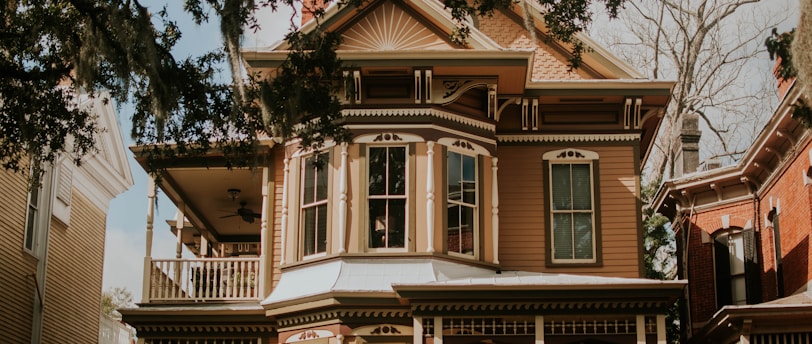How Long Do Exterior Finishes Last? A Homeowner’s Guide to Lifespan, Maintenance, and Signs of Wear
Wondering how long exterior finishes like paint, stucco, siding, or brick last? Learn about their lifespans, signs of wear, and how to maintain each type to extend your home's curb appeal and protection.
HOME EXTERIORSEASONAL HOME MAINTENANCEDIY
4/24/20253 min read


The exterior finish of your home does more than make it look good—it also protects it from the elements. Whether you’re buying a home or maintaining the one you have, it’s important to know how long different types of exterior finishes last and what kind of care they need. Some finishes can last for decades with the right maintenance, while others may need to be replaced or refinished more often. In this article, we’ll explore common exterior finishes, how long they typically last, what signs of aging to watch for, and how homeowners can extend their life with proper care.
1. Exterior Paint
Lifespan: 5 to 10 years
Signs of Wear: Fading, peeling, cracking, or bubbling paint
Maintenance Tips:
Wash the exterior annually to remove dirt and mildew
Repaint before significant peeling begins
Choose high-quality paint designed for your climate
Repair caulking and fill small cracks before painting
Regular maintenance and timely repainting can prevent moisture damage and wood rot underneath.
2. Vinyl Siding
Lifespan: 20 to 40 years
Signs of Wear: Fading color, cracks, warping, or panels that come loose
Maintenance Tips:
Wash with a hose or power washer annually
Keep grills and fire sources away to prevent warping
Repair small cracks to prevent water intrusion
Avoid impact from lawn equipment or sports
While vinyl doesn’t need painting, extreme sun exposure can cause fading, so color longevity depends on climate.
3. Aluminum Siding
Lifespan: 30 to 50 years
Signs of Wear: Fading paint, chalky residue, dents, corrosion
Maintenance Tips:
Clean annually with a mild detergent
Repaint every 5–10 years if fading or chalking occurs
Repair or replace dented panels
Apply anti-corrosion coatings if needed
Aluminum is resistant to fire and insects but can dent easily, especially during storms or hail.
4. Stucco
Lifespan: 50 to 80 years (when properly maintained)
Signs of Wear: Cracks, staining, bulging areas, or mold growth
Maintenance Tips:
Inspect for cracks annually and seal small ones
Repaint or recoat every 5–10 years to maintain waterproof seal
Ensure proper drainage away from walls
Avoid planting too close to stucco surfaces
Stucco is durable but porous, so water management is essential to avoid long-term damage.
5. Wood Siding
Lifespan: 20 to 40 years (depends on species and care)
Signs of Wear: Rotting, warping, flaking paint, insect damage
Maintenance Tips:
Repaint or re-stain every 3–7 years
Keep vegetation trimmed away from siding
Seal joints and cracks to prevent moisture intrusion
Replace damaged boards immediately
Wood siding has a classic look but needs the most care to prevent rot and insect damage.
6. Brick and Stone Veneer
Lifespan: 75 to 100+ years
Signs of Wear: Cracked mortar, loose bricks, efflorescence (white powder)
Maintenance Tips:
Check mortar joints regularly and repoint if needed
Clean with gentle water pressure to avoid damage
Seal every few years in wet climates
Avoid water pooling at the foundation
These finishes are incredibly durable, but mortar maintenance is key to longevity.
7. Fiber Cement Siding (e.g., Hardie Board)
Lifespan: 30 to 50 years
Signs of Wear: Cracks, delamination, fading paint
Maintenance Tips:
Repaint every 10–15 years
Inspect caulking and seams annually
Power wash with care to avoid damaging edges
Keep gutters clean to avoid water damage at the edges
Fiber cement is fire- and insect-resistant, and it's becoming a popular long-term choice for homeowners.
Tips to Extend the Life of Any Exterior Finish
No matter what kind of exterior your home has, you can make it last longer with a few simple habits:
Clean regularly: Dirt, algae, and mildew can cause slow damage over time.
Inspect annually: Walk around your home at least once a year and look for cracks, warping, or discoloration.
Seal and caulk: Small gaps around windows, doors, or siding joints let in water. Reseal them as needed.
Keep vegetation trimmed: Bushes and trees that touch the house can trap moisture and pests.
Manage water: Keep gutters and downspouts clear, and make sure water drains away from your home.
Exterior finishes are one of the most visible and protective parts of your home. They shield you from weather, pests, and moisture. Each finish type has its own strengths, weaknesses, and care needs. By understanding what kind of siding or coating your home has—and how to maintain it—you can protect your investment and avoid costly repairs down the road. A little attention now can add years to your home’s appearance and performance.
Quantum Scope Inspections
Your Home’s Health, Our Top Priority
get the Home Seller's Handbook, 2025 Edition
Maximize your investment with repairs and maintenance, on Amazon.
© Quantum Scope Inspections 2025 | All Rights Reserved | Privacy Policy
Website Design by Creative Web Design Lab
